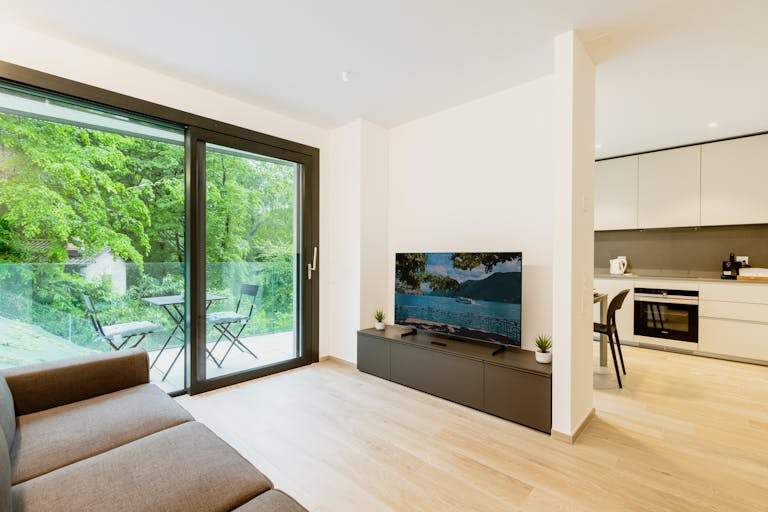Kokage-gumo Pavilion by Junya Ishigami: A Masterpiece of Timeless Architecture
The Kokage-gumo Pavilion, a temporary architectural intervention by Junya Ishigami + Associates, redefined the historic garden of the 1927 Mankichi Yamaguchi Residence in Tokyo. Designed as a seasonal sunshade for the summer of 2021, this structure seamlessly blended into its early Showa-era surroundings while evoking an immediate sense of age and history.
Through the innovative use of traditional yakisugi (charred cedar) techniques, fluid architectural forms, and a deliberate play of light and shadow, Ishigami created a space that felt both ancient and transient. This article explores the design philosophy, construction techniques, and sensory impact of this remarkable pavilion.
The Historical Context: Mankichi Yamaguchi Residence
The Mankichi Yamaguchi Residence, built in 1927, is a significant historical structure in Kudanshita, Tokyo. The property was originally developed with contributions from Tacchu Naito, the structural engineer behind Tokyo Tower, adding another layer of architectural prestige.
The mature garden surrounding the house provided an ideal setting for Ishigami’s intervention—a sunshade designed to soften harsh summer sunlight while enhancing the garden’s historical ambiance.
Design Philosophy: Blending the Old and New
Junya Ishigami’s approach was to create a structure that felt like it had always belonged—despite being a temporary addition. Key elements of the design included:
1. Yakisugi (Charred Cedar) Technique
- The entire structure was built using wooden pillars and roofs, then charred using the traditional Japanese yakisugi method.
- Controlled burning carbonized the cedar surfaces, with some sections intentionally burned deeper to mimic natural decay.
- This technique not only provided weather resistance but also gave the pavilion an aged, ruin-like aesthetic.
2. Organic, Fluid Forms
- Instead of imposing rigid geometry, the pavilion weaved around existing trees, adapting to the garden’s natural topography.
- The blackened wooden framework appeared almost root-like, as if it had grown organically over decades.
3. Compression of Time
- The pavilion’s scorched appearance made it seem as though it had leaped through time, embodying decades of weathering in a single moment.
- Visitors experienced a sense of timelessness, as if standing in a structure that had always been part of the garden.
Sensory Experience: Light, Shadow, and Atmosphere
One of the most striking aspects of the Kokage-gumo Pavilion was its manipulation of light and shadow:
1. Filtered Sunlight
- The perforated roof and surrounding tree canopy diffused harsh sunlight, creating a soft, dappled effect.
- This transformed the garden into a cool, shaded retreat during Tokyo’s intense summer heat.
2. Visual Illusions
- The blackened structure obscured surrounding high-rises, effectively transporting visitors back to the early Showa period.
- Glimpses of the modern city visible through the trees faded in and out of view, reinforcing the pavilion’s temporal ambiguity.
3. Tactile and Spatial Engagement
- The textured, charred wood invited closer inspection, revealing the craftsmanship behind its intentional decay.
- The interplay of solid and void created dynamic spatial sequences, encouraging visitors to explore the garden in new ways.

Why This Pavilion Matters in Contemporary Architecture
The Kokage-gumo Pavilion is more than just a temporary structure—it’s a meditation on time, materiality, and perception. Here’s why it stands out:
1. Challenge to Permanence
- Unlike conventional architecture, which seeks durability, Ishigami embraced transience, allowing the structure to feel both ancient and fleeting.
2. Dialogue Between Nature and Architecture
- By adapting to existing trees rather than removing them, the design reinforced harmony between built and natural environments.
3. Revival of Traditional Techniques
- The use of yakisugi highlighted sustainable, time-tested Japanese craftsmanship in a modern context.

A Fleeting Yet Eternal Masterpiece
Junya Ishigami’s Kokage-gumo Pavilion was a poetic architectural gesture—a structure that felt simultaneously old and new, permanent and ephemeral. By merging traditional techniques with avant-garde design, Ishigami created a space where time seemed to collapse, allowing visitors to experience history in a deeply sensory way.
Though temporary, its impact on landscape architecture, material innovation, and spatial storytelling remains enduring.







